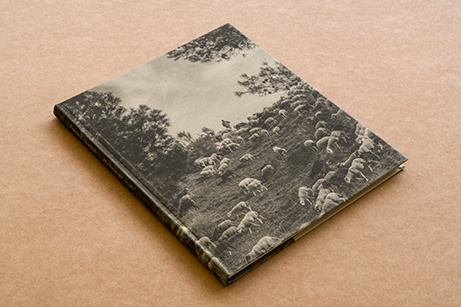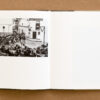El silencio del cayado – Francisco Guardado
Title: El silencio del cayado.
Publisher: Ediciones Posibles.
Photographs: Francisco Guardado.
Text: Estefanía Fernández Fernández.
Design: underbau.
Sequence: Rafa Badía.
Size: 27,3 x 23 cm.
44 photographs.
Nº of pages: 96.
Hardcover canvas and printed.
27.00€
Estamos trabajando en nuestra web, de momento no es posible comprar libros través de nuestra tienda online. Para cualquier consulta escríbenos a info@artslibris.cat
Availability: In stock
Francisco Guardado began his photographic career in 2015 after retiring, and he has since devoted his time to documenting the life of shepherds of the region of Campiña Morón-Marchena, in the south of Spain, where he lives. Paco uses photography to preserve the lives and work of these shepherds who carry on their backs a millenary tradition passed down from generation to generation; men and women who, as a social anthropologist, Estefanía Fernández Fernández tells us in the text that accompanies this book, are culture bearers and managers of the territory through which they transit.
The day Paco showed us his project, we were immediately struck by the honesty of his work, by the way, it feeds on tradition, in this case, the tradition of humanist photography which laid the foundations for documentary reportage. His images convey respect for that which his camera records, and we were deeply captivated by his search for a lyrical language that will allow him to ennoble in the sight of the profane that which he shows without falling into a Manichean discourse, paying special attention to gestures and looks. We identify with his formal austerity, which begins with the distance at which each photograph is taken. Surely the author’s age has influenced him to be delicate and respectful. In an age where elderliness seems to have vanished, where the continuity of the present has replaced the future and speed has become the natural state for human beings, Paco, with a whole life on his shoulders, comes to tell us about the silent lives of those who walk beside their herds since time immemorial, taking care of the animals and the territory, that is, of that which preceded them and which will continue to exist after they are themselves gone. And we can only feel proud and grateful to publish his first book.
When the book’s protagonists, the shepherds, claim their right to guide their herds through the territory, they are preserving the physical memory of the place, just as the photographer intends to fix visual memory in order to keep things from disappearing. This was probably the first function of photography, and it still stands today. In short, it is a question of bequeathing to the future generations a document to remind them where they come from and who they are.














